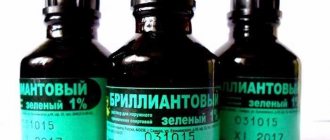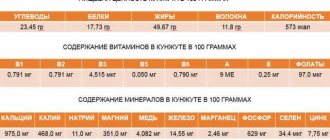Aspirin asthma is just the tip of the iceberg, and the whole lump is called intolerance to non-steroidal anti-inflammatory drugs (NSAIDs). Of course, this is one of the most serious forms of adverse reactions to acetylsalicylic acid (aspirin) and related substances, but it is far from the most common. At the same time, the NSAID drugs themselves are only one source of problems for people who suffer from one form or another of intolerance.
Whether a person gets a headache, a fever, or arthritis develops - in all these situations, medications from the NSAID group will come to the rescue. All of them have antipyretic, analgesic and anti-inflammatory effects. However, in some people, under the influence of NSAIDs, biochemical processes mistakenly “switch” to the synthesis of leukotrienes, which themselves cause inflammation and symptoms of intolerance.
These symptoms can be very different, but most often the respiratory tract is affected in the form of a runny nose, nasal polyposis, cough or bronchospasm (in various combinations). If a person experiences bronchospasm when taking NSAIDs, then they talk about aspirin asthma, which can be a separate form of the disease or join an existing atopic bronchial asthma.
Skin lesions are no less common - various dermatitis, urticaria, Quincke's edema; headaches and abdominal pain, as well as other symptoms, are possible. In severe cases, life-threatening anaphylactic reactions occur, and the risk is especially high in people with aspirin-induced asthma.
In this article, we will not dwell on how aspirin asthma and intolerance to NSAIDs in general are diagnosed and treated, but will only try to tell how to reduce the risk of serious reactions that are possible in such people if they accidentally take NSAIDs or come into contact with salicylates (substances related to acetylsalicylic acid). acid).
First of all, you must completely avoid taking aspirin and other NSAIDs. These drugs are widely used, including as part of combination medications (for colds and flu, for hangovers, etc.). It is better to once again clarify what exactly is contained in the medicine, even if it was prescribed to you by a doctor. Here are just a few of the many NSAIDs.
Background
In 1903, 4 years after the introduction of aspirin, Franke (Germany) observed a reaction in the form of laryngospasm and shock to taking aspirin.
In 1905, Barnett reported 2 cases of aspirin-induced suffocation. In 1919, Francis identified the relationship between polyposis rhinitis and hypersensitivity to aspirin, and in 1922 Widal was the first to establish the relationship between all the symptoms of the triad. In 1968, Samter and Beers described the symptom complex and called it the “aspirin triad.” In parallel with this, ideas about the pathogenesis of the disease developed. Slow-reacting substance anaphylaxis (SRS-A) was discovered in 1938 when Felberg and Kellaway injected cobra venom into the lungs of guinea pigs and showed that it produced bronchospasm that was not due to histamine, was slower to develop, and was longer lasting. In the 1960s, Brockehurst et al
declared the exceptional importance of MPC-A as a mediator of allergic reactions. A study of the chemical structure of MPC-A showed that its components are leukotrienes
First aid algorithm
Seizures in adults and children can occur unpredictably. Among the reasons are the patient’s interaction with irritating factors, or an emotional outburst. When a patient has respiratory failure, he needs first aid.
Status asthmaticus is the most severe form of attack. It is distinguished by the following characteristics:
- A prolonged attack of difficulty breathing, the respiratory rate reaches forty within a minute
- The patient has difficulty breathing out
- Skin turns blue
- Increased sweating
- Rapid heartbeat
- High blood pressure
- The patient breathes using the intercostal muscles and muscles of the shoulder girdle
- Forced sitting position of the body with emphasis on the hands to facilitate breathing
- Painful cough
In this condition, emergency care includes measures:
- Inhalation of humidified oxygen
- Use of systemic hormones
- Intravenous infusion of bronchodilators
- Infusion therapy to eliminate circulatory pathology and prevent blood clotting
- The patient is transferred to artificial ventilation and given symptomatic therapy
Clinical manifestations
Symptoms of aspirin-induced asthma are very specific and fall into three main areas:
- characterized by the appearance of suffocation, which is expressed depending on the severity of asthma;
- with the disease, inflammatory processes are observed in the mucous membranes of the nasal membranes with the formation of polypous rhinosinusitis;
- there is immunity to NSAIDs, which is noted in the anamnesis or occurs directly during the disease;
- As a rule, symptoms of this form of asthmatic disease are more often observed among females aged 30-40 years, who are susceptible to asthmatic disease twice as often as men. In this case, the woman experiences severe suffocation, rhinitis, and inflammatory diseases in the nasal sinuses. Subsequently, she develops hypersensitivity to anti-inflammatory drugs;
- at the onset of the disease, symptoms resemble ARVI and flu, accompanied by a runny nose, which very often requires unconventional treatment to relieve;
- for 15% of patients, treatment with anti-inflammatory drugs is a provoking factor of an allergic attack. This is expressed by difficulty breathing and copious nasal discharge, 1-2 hours after taking the medicine;
- after this, obstructive processes develop in the large bronchi with expiratory shortness of breath (heavy exhalation) and wheezing. At this time, the patient’s additional muscles are involved in respiratory activity, and he takes the most comfortable position to facilitate breathing;
- In some patients, symptoms may be complicated by itching of the skin, swelling and hyperemia.
It should be noted that this form of the disease can be classified as severe, in which disability of patients is often observed. In addition, such patients have a high chance of death. However, such a course of the disease can only be observed if there is no timely treatment.
What painkillers are available?
Since most painkillers for this disease are banned, it becomes difficult to find the right medicine. In most cases, if it is impossible to do without aspirin and similar drugs, desensitization is required.
Hormonal painkillers based on steroids are usually allowed. However, it is worth considering that such drugs can usually only be used with a prescription.
In general, in aspirin-induced asthma, care must be taken when selecting medications for fever and pain. In some cases, when taking painkillers, antihistamines are prescribed to help alleviate the symptoms of aspirin-induced asthma.
Etiology
Allergens for aspirin asthma are drugs containing salicylates, for example: acetylsalicylic acid (ASA).
The medicine has an analgesic, anti-inflammatory, antipyretic, and antiplatelet effect, therefore it is widely used for various diseases.
Aspirin is an irreversible inhibitor of the enzyme cyclooxygenase (COX), which is secreted by body cells during pathological reactions. COX ensures the conversion of arachidonic acid into mediators of the inflammatory response, which determine all the symptoms of various diseases.
Other drugs in the NSAID group are reversible inhibitors and are safer for use, therefore they do not distinguish other types of asthma.
Although when diagnosing and preventing the disease, it is necessary to take into account the group of drugs that the patient is taking.
When taking ASA, COX is blocked in the body and the following phenomena are noticeable:
- the release of bradykinin, a mediator that dilates blood vessels, decreases and their permeability decreases;
- the formation of macroergs (ATP) decreases;
- the synthesis of hyaluronidase decreases;
- the work of the thermoregulation center is regulated and body temperature decreases;
- the sensitivity of pain centers decreases;
- platelet aggregation (sticking together) decreases.
For what diseases is aspirin taken?
Aspirin is an almost universal remedy, so it is used to treat a wide range of diseases.
Today, the list of diseases is decreasing due to the side effects caused by this drug.
- Headache.
- Flu.
- Joint pain.
- Muscle pain.
- Toothache.
- Arrhythmias.
People suffering from allergic pathology should take NSAIDs with caution for these diseases!
Preparations containing acetylsalicylic acid:
- "Aspirin".
- "Citramon".
- "Barthel."
- "Bufferin."
- "Cardiomagnyl".
- Magnil.
- "Mikristin."
- "Thrombo ACC".
Be careful when taking these medications!
Treatment with medications
Treatment of aspirin-induced asthma is prescribed by an allergist; the choice of drugs and the duration of basic therapy depend on:
- Phases of the disease
- Age category of the patient
- Individual characteristics of the body
- Presence or absence of complications
The attending physician is required to draw up an individual treatment plan for the patient.
Mandatory components of basic therapy:
- Going on a diet
- Stop taking medications containing salicylates or components of non-steroidal anti-inflammatory drugs
- Pharmacotherapy, the main effect of which is to break the chains formed by inflammatory substances
- Another goal of basic therapy is to make the bronchi insensitive to the effects of salicylate derivatives
Treatment should follow principles including:
- Controlling asthma symptoms
- Implementation of measures to prevent exacerbations and development of status asthmaticus
- Maintaining the normal state of the respiratory system
- Ensuring the patient's normal physical activity
- Elimination of negative provoking drug factors
- Impossibility of irreversible blockage of the airways
- Preventing patient death from suffocation
Drug therapy is carried out using:
- Membrane stabilizing agents
- Leukotriene receptor blockers (agonists)
- Glucocorticosteroids when the disease has reached a severe phase
The first task of basic therapy is the exclusion of non-steroidal anti-inflammatory drugs and products containing acetylsalicylic acid. Epithalamin and Epifamin are prescribed, measures to increase melatonin, helping to normalize sleep.
Antioxidants reduce oxidative processes inside the body. Methods are prescribed that improve microcirculation in the bronchopulmonary system. Anti-inflammatory therapy stabilizes cell membranes and reduces leukotrienes. With the help of immunomodulators, the patient's body's defenses are increased.
To make the body immune to salicylates, the desensitization method is used. It is based on the property of the patient’s immunity not to respond to repeated administration of a provoking substance, since the respiratory tract receptors are depleted. The effect is ensured by the administration of aspirin in a minimal dose with control of respiratory functions. In the absence of a negative reaction from the body, the dose is slightly increased.
When the sensitivity threshold is reached for the provoking factor, a maintenance dosage of aspirin is selected. To carry out the method, the doctor must have the necessary experience, and the hospital must have conditions for providing emergency care to the patient.
Causes
The development of aspirin-induced bronchial asthma is associated with increased sensitivity to NSAIDs and aspirin. When the disease develops against the background of an allergy to diclofenac, ibuprofen, indomethacin, ketoprofen, naproxen, piroxicam, mefenamic acid and sulindac, most patients experience the development of a cross form of allergy, which means that the patient has hypersensitivity to aspirin in approximately 50 or even 100% of cases hypersensitivity will occur, for example, to indomethacin or sulindac.
Very often, with the development of this type of bronchial asthma, patients experience allergies not only to medications, but also to natural salicylates, for example, tomatoes, apples, lemons, cucumbers and peppers, berries (raspberries, strawberries and strawberries), seasonings (turmeric and cinnamon). In addition, hypersensitivity can also develop to the tartazine dye and a variety of canned foods that contain salicylic and benzoic acids.
Diagnosis of the disease
Aspirin-induced (pseudoallergic) bronchial asthma is a disease for which the following diagnostic procedures are performed.
- Anamnesis collection.
- Physical examination.
- Laboratory tests.
- Examination using instruments.
- Blood test (if required).
Attention! Diagnostic samples should only be taken in the presence of competent specialists and an intensive care unit.
The disease can begin to develop not only due to medications. The following foods also contribute to this:
Aspirin asthma: what is it?
Bronchial - a condition of difficulty breathing caused by bronchospasm as a result of taking a certain group of drugs
(aspirin, non-steroidal anti-inflammatory drugs - ibuprofen, diclofenac, indomethacin, ketoprofen, etc.).
The appearance of shortness of breath can also be caused by salicylates contained in cherries, prunes, apricots, apples, tomatoes, cucumbers, grapefruit, melon, raspberries, strawberries, etc. Bronchospasm can be provoked by sausages and canned products, food additives.
Aspirin asthma is not an allergic disease, since
it is not the allergen that causes suffocation
, but changes in the formation of arachidonic acid metabolites due to the use of NSAIDs.
As a result, active substances that cause inflammation are formed in excess quantities, and against this background bronchospasm occurs. Therefore, aspirin asthma is considered a respiratory pseudo-allergy.
Another cause of bronchospasm is considered to be an increase in platelets when taking NSAIDs. As a result, substances (thromboxane and serotonin) are intensively released, causing spasms of the airways.
Depending on the severity of symptoms, there are the following types of aspirin-induced asthma:
- intermittent - the disease manifests itself no more than once a week, and at night - no more than 2 times a month;
- persistent mild course - the appearance of daytime symptoms more than 1 time per week, not exceeding 1 time during the day, night symptoms - more than 2 times per month. The patient's motor activity decreases during suffocation;
- persistent moderate - characterized by daily attacks, at night - more than once a week. Motor activity is significantly reduced;
- Persistent severe course - daytime symptoms are constant, frequent night exacerbations. Motor activity is minimal.
Attention! Do not think that the intermittent degree is mild, and aspirin asthma in this case does not require treatment. Quite often, this disease has a severe and protracted course, dangerous complications in the form of status asthmaticus are possible, so treatment and supportive care are mandatory
Quite often, this disease has a severe and protracted course, dangerous complications in the form of status asthmaticus are possible, so treatment and supportive care are mandatory.
The leading way to diagnose bronchial asthma is to study the function of external respiration. It is recommended to apply an additional test for hypersensitivity to aspirin. This is done due to the fact that 30% of patients with bronchial asthma have the aspirin form of the disease. The essence of the test is to assess the patency of the airways with a sample of different doses of aspirin. If the body does not respond to 650 mg of the drug, this means that the patient is not hypersensitive to it.
Blood tests are also performed to determine the reaction to this drug.
Pathogenesis
Pathogenesis – the course of the disease, is determined by the mechanism of action of ASA.
Once in the body, ASA actively and irreversibly blocks cyclooxygenase in healthy people.
In people suffering from aspirin-induced asthma, instead of COX, the synthesis of lipoxygenase begins, which promotes the conversion of arachidonic acid into leukotrienes.
Leukotrienes are biologically active substances involved in the pathogenesis of bronchial asthma, leading to bronchospasm, affecting vascular tone and permeability and playing an important role in the development of aspirin-induced asthma.
There is a platelet theory that explains the pathogenesis of the disease through the effect of ASA on platelets.
Their degranulation (destruction) occurs, as a result, cytotoxic (destructive cells) and proinflammatory (promoting inflammation) mediators are released. It turns out that aspirin has the opposite effect: it was supposed to help, but it only got worse!
In healthy people, no pathological effect of aspirin on platelets was found, and in suffering people, only platelets change their properties under the influence of ASA; other cells are not involved in the process.
Symptoms of aspirin asthma

Several clinical variants of aspirin-induced asthma have been described and studied:
- "pure" form;
- asthmatic triad;
- combination of intolerance to NSAIDs and allergic asthma.
In the first option, there is a clear pattern of occurrence of asthma symptoms in the form of acute shortness of breath and cough after taking salicylate derivatives.
The second form, according to its name, can be represented by the formula: anaphylactoid reactions to NSAIDs + asthmatic suffocation + pathology of the nasal mucosa in the form of polyp formation.
Distinctive signs of the triad are nasal congestion, decreased or absent sense of smell, pain in the projection of the paranasal sinuses, and headache. When these symptoms begin to be combined with signs of bronchospasm, leading to respiratory failure, the relationship with aspirin or other NSAIDs should be assessed. As the disease progresses, the likelihood of anaphylactoid manifestations such as rashes, inflammation of the nasal mucosa, conjunctivitis, and digestive system disorders increases.
For the third, more complex form, there is a risk of developing severe breathing pathology, since aspirin-induced asthma is resistant to treatment with glucocorticoid hormones, and the latter are the main group of drugs for helping with life-threatening asthma attacks.
In general, considering the symptoms of aspirin intolerance, we can identify a wide range of clinical manifestations:
- redness of the skin of the face or upper body;
- attacks of shortness of breath and cough;
- inflammation of the nasal mucosa and mucous membrane of the eyes (conjunctivitis);
- rash like urticaria;
- angioedema (Quincke type);
- increased body temperature;
- diarrhea;
- pain in the upper abdomen, sometimes accompanied by nausea or vomiting.
- status asthmaticus as a severe exacerbation of asthma;
- respiratory arrest,
- loss of consciousness
- shock.
In this case, the first signs of an incipient disease may include only sneezing, runny or stuffy nose and redness of the face. And these symptoms occur 1-3 hours after taking aspirin or other NSAIDs.
Main features
Symptoms of aspirin-induced asthma are:
- cough;
- stuffy nose;
- difficulty breathing;
- dyspnea;
- conjunctivitis;
- stomach upset;
- red spots on the face;
- loss of consciousness.
In this case, at first a person may only experience sneezing, a runny nose, or nasal congestion and redness of the face.
Initial period
The very first manifestations of AA do not concern the respiratory tract. The immune and endocrine systems suffer. In some cases, the thyroid gland is affected negatively. Women experience menstrual irregularities.
Later the first symptoms begin to appear. Treatment of rhinitis can lead to complete recovery.
Acute period
Or conditions that are close to bronchospasm are the height of the disease. The acute period occurs during the patient’s hormonal changes:
- for men - 40-50 years;
- for women - 30-40 years;
- in children - puberty.
Video from Dr. Komarovsky School
A very interesting and educational video about bronchial asthma:
Timely and properly selected therapy helps the patient return to normal life, and prevention significantly reduces the risk of recurrence of the disease.
Asthma is called bronchial aspirin asthma in cases where attacks in the patient occur as a result of the introduction of non-hormonal drugs of non-steroidal origin into the body. It is the drugs of this group that contain acetylsalicylic acid and salicylates. The aspirin form of the disease can occur when the dietary diet is violated.
However, the statement that it is aspirin-containing substances that cause the development of this disease is incorrect. There are a large number of drugs with similar pharmacological properties that can also act as provocateurs. The cause of attacks may also be food intolerance, in which case, in case of bronchial aspirin asthma, it is necessary to observe.
Treatment of asthma is accompanied by the use of anti-inflammatory drugs that block enzymes responsible for the formation of biologically active substances. As a result, a chemical imbalance occurs, leading to narrowing of the bronchi, spasms, and ultimately to...
The mechanism of action of salicylates is different in patients suffering from bronchial asthma, and the cause of attacks was unknown. Currently, there are several such reasons:
- the occurrence of allergies to aspirin itself and substances with similar properties (with simultaneous development);
- food intolerance (after eating foods excluded by diet);
- disruption of the production of leukotrienes in the patient’s body (genetic disorder);
- production of a small amount (genetic deviation) or suppression of the formation of prostaglandin enzymes under the influence of medications.
The key cause of the disease is an imbalance in the chemical balance and cessation/suppression of enzyme activity.
Prevention
Preventive measures are aimed at preventing the occurrence of signs of AA, as well as eliminating risk factors for exacerbation of the pathology. The most common activities include the following:
- stop taking aspirin and NSAIDs;
- do not drink alcohol and do not;
- do not consume foods and substances that contain tartrazine;
- follow a diet.
Attention! Contact your doctor as soon as possible. The specialist will draw up an effective treatment plan. It is proper treatment that will prevent complications.
What it is?
Aspirin-induced bronchial asthma is not the most common type of this pathology. It develops due to the effect of acetylsalicylic acid on the body, and it is quite difficult to predict a possible increased susceptibility to this substance.
According to statistics, the majority of patients are women aged 30 to 50 years. There is interesting data regarding an inherited predisposition to bronchial asthma. According to studies, predisposition to aspirin-induced bronchial asthma is transmitted through the maternal line approximately 10 times more often than through the paternal line. Moreover, mothers more often pass defective genes to daughters than to sons. In general, cases of the aspirin form account for more than 20–40 percent of all cases of asthma, and different sources provide different information.
In children, this disease is usually less common, but the possibility exists. In general, in most cases, the presence of this disease is determined only when treatment is started with painkillers and anti-inflammatory drugs.
Aspirin-induced asthma is characterized by a triad of symptoms; if it does not fully develop, it is called an incomplete triad. This triad is one of the main diagnostic criteria for this disease; if it is absent, it is impossible to talk about aspirin asthma in most cases. The triad usually includes the following symptoms:
- an inflammatory process on the nasal mucosa, usually leading to various types of rhinitis;
- attacks of difficult breathing, suffocation;
- identification of intolerance to aspirin and other anti-inflammatory non-steroidal painkillers.

The pathogenesis of this disease is a rather complex process; there are several theories as to why some people become too sensitive to acetylsalicylic acid. The formation of aspirin asthma is associated with metabolic processes in the body.
If the aspirin asthma triad is not present, the cause of the symptoms may be different. In general, if signs of bronchial asthma occur, you need to conduct a full examination, which will help to accurately determine the cause.
The main symptom of this disease is shortness of breath, severe coughing, turning into suffocation, like any type of asthma. The further you go, the more severe the symptoms become, especially if their main cause, taking acetylsalicylic acid, does not stop.
This disease in most cases begins to develop with an inflammatory process in the nasopharynx. It usually presents as rhinitis, very often with the formation of polyps on the nasal mucosa. Also, with this form of asthma, patients may note the following:
- recently had to take painkillers, anti-inflammatory non-steroidal drugs, symptoms begin to intensify with taking aspirin and other medications;
- before asthma there was a period reminiscent of a common cold, pre-asthma;
- sometimes all of the above symptoms are accompanied by the appearance of skin rashes, usually they are a rash like urticaria;
- Expiratory shortness of breath usually occurs when it becomes harder to exhale than to inhale.

If such symptoms occur, you should definitely consult a doctor. It is worth noting that these symptoms may be accompanied by other types of asthma, so a full diagnosis is required before starting treatment.
Complications
A patient who, for one reason or another, does not take medications on a regular basis and does not adhere to a diet may experience status asthmaticus. In this condition, asphyxia occurs for no reason. There are often cases when refusal to take medications led to death.
In order to prevent serious complications, the patient must realize that the disease will have to be treated for life
It is important to avoid contact with food and household allergens and plant pollen. Often other systems and organs are affected (for example, atopic dermatitis, eczema, urticaria)
Share this material on social networks. This will allow other people to learn important information about aspirin-induced asthma.
Diet
Diet is one of the main conditions for recovery and treatment of diseases. It is difficult to keep it, because salicylates are contained in a large number of food products.
If the diet is not followed, the patient should:
- fatigue;
- headache;
- nasal discharge;
- cough;
- deterioration of sense of smell;
- the appearance of polyps in the nasal cavity;
- appearance of suffocation.
Prohibited products for aspirin-induced asthma:
- apples;
- avocado;
- dates;
- cherry;
- prunes;
- grapefruit;
- raspberries;
- grape;
- plum;
- strawberries;
- peach;
- kiwi;
- bananas;
- cauliflower;
- cucumbers;
- radish;
- spinach;
- coffee;
- wine;
- juices from the listed vegetables and fruits;
- tea;
- Pine nuts;
- peanut;
- ice cream;
- gelatin;
- jelly;
- mint;
- almond;
- pistachios.
Aspirin-induced asthma is a rare pathological condition that can lead to human disability.
Knowing how to respond to a seizure can save someone's life, so remember the information and stay healthy!
Forecast
With the development of a sharp and vivid attack, the patient’s prognosis is unfavorable in the absence of outside help.
If help is provided to the patient in a timely manner, then there is no reason to worry. Patients with aspirin-induced asthma have a favorable prognosis if they follow preventive measures, which requires great effort.
For a positive prognosis it is important:
- periodic observation by an allergist;
- periodic inspections;
- taking tests to detect leukotrienes;
- lack of contact with drugs of the NSAID group;
- proper diet;
- healthy rest and lifestyle.
The diagnosis of aspirin asthma is not fatal, so do not panic, but treat the disease!
Reasons for the development of pathology
The main cause of thermoneurosis is viral infections that were previously suffered. As a rule, when all the symptoms of the disease go away, the fever remains. This is what should make you wary. Regular stress, anxiety, and overwork can contribute to the development of this disease. Head injuries or various other injuries can also cause the development of pathology. In addition, problems and scandals in the family, conflicts at work, failures in studies, heavy mental or physical stress can also lead to thermoneurosis.
Sometimes the disease provokes a hormonal imbalance in the body, which more often happens to women. In any case, if such a temperature persists for several days for no apparent reason, this is a reason to consult a neurologist.
Other negative impact factors include:
- malfunction of the thyroid gland;
- damage to the intervertebral discs in the spine;
- tumors and cysts of cerebral structures;
- cerebral aneurysms;
- infringement of the vagus nerve;
- changes in the hypothalamus and pituitary gland;
- hormonal pathologies;
- obesity and wasting;
- a sharp change in the climatic conditions of one’s residence.
As mentioned above, it is worth excluding dangerous infections, hidden inflammatory processes and the development of oncological tumors.

Description of the pathology
What is aspirin asthma? It refers to types of bronchial dysfunctions in which the main provoking factor is any anti-inflammatory non-steroidal drug, in particular aspirin. Doctors distinguish this disease into a special form, similar in its symptoms to the standard disease. Patients, just as with standard bronchial asthma, experience attacks of severe suffocation for many years, accompanied by a dry, debilitating cough. But the attacks are not caused by ordinary household irritants.
This disease is classified as a chronic incurable dysfunction of the respiratory system of an allergic nature, and it usually occurs in paroxysms. What is the mechanism of the disease? Under the influence of aspirin or other medications on the bronchial mucosa, the functioning of the entire organ changes, and this often leads to spasms in the bronchi, narrowing of their muscles, difficulty breathing, and shortness of breath.
But this pathology does not always manifest itself when using only aspirin or medications. This is still possible when eating foods that contain salicylates, but not necessarily. Allergies to medications such as analgin, sedalgin, ibuprofen and other drugs can give similar symptoms. According to statistical studies among people who suffer from any type of bronchial asthma, a fifth of them are sensitive to salicylic acid. When taking irritating medications, processes occur inside the body that cause narrowing of not only the bronchi. Swelling of the nasopharynx and other symptoms of a reaction may appear.
Allergic asthma has pronounced clinical manifestations that worsen the general condition of the patient. In this case, all patients are prohibited from using medications that contain tartazine.
Is it possible to inject lidocaine?
Studies show that lidocaine does not worsen the condition of patients with aspirin-type asthma. Therefore, it can be used as a pain reliever. However, it is worth noting that the dosage must be strictly observed; before starting treatment, you must consult a doctor.
When classifying bronchial asthma, many experts classify aspirin-induced asthma as an endogenous form of the disease, while others identify it as a separate form. One way or another, in aspirin-induced asthma, drugs from the group of non-steroidal anti-inflammatory drugs act as an allergen. In addition to aspirin, this group includes indomethacin, diclofenac, spasmalgon, tempalgin, pentalgin, baralgin, analgin, citramon and many other drugs. Therefore, such patients should especially carefully read the instructions for use of the drug before taking it.
Very often, aspirin intolerance develops in patients who previously suffered from asthma. Therefore, aspirin asthma almost never occurs in childhood. A classic patient is, as a rule, a person, usually a woman, of middle age (30-50).
Most often, before aspirin-induced asthma manifests itself, such a patient complains of congestion and copious discharge from the nose (rhinitis). Often such a patient’s sense of smell sharply decreases, and a headache may appear in the forehead. Somewhat later, polyps may be found in the nose and sinuses. These symptoms: rhinitis, polyps, asthma attacks and intolerance to non-steroidal anti-inflammatory drugs are classic symptoms of the disease.
Treatment
After a full examination and diagnosis, the doctor prescribes treatment, which currently uses inhaled corticosteroids (Diprospan, Budesonide, Beclazon Eco), bronchodilators (Salbutamol, Fenoterol, Atrovent) and antagonists leukotriene receptors (Montelukast, Acolat, Singular, etc.).
The dosage of the drug is strictly selected and controlled by the attending physician. If well tolerated, desensitization is carried out - they have a certain effect on the pathogenesis of the disease and develop the body's immunity to new doses of aspirin. If polyps grow profusely in the nasal cavity, surgical removal is suggested, after which it becomes easier to breathe through the nose.
Diet
Treatment of bronchial aspirin asthma includes not only medication, but also adherence to a certain regimen and diet, which helps strengthen the body's defenses.
Diet for bronchial asthma implies the following:
- Refusal of all products containing the dye E102, which gives food a yellow tint. This includes carbonated drinks, juices, instant soups, processed foods and much more.
- Refusal to consume strong allergens, such as citrus fruits, exotic fruits, mushrooms, honey.
- Limiting salt.
- Complete exclusion of smoked meats, salted foods, vinegar and products with preservatives.
- Limiting foods with flavorings and additives.
- Drinking enough liquid.
Thus, every person faced with this disease can live a full life and play sports. To do this, he must be extremely attentive to his health, strictly follow his diet and daily routine, and also follow the instructions of a specialist.
Who treats
If you experience asthma attacks and signs of this disease, you can contact an otolaryngologist or directly a pulmonologist. You may need to consult an allergist and other specialists.
Most varieties of this pathology cannot be completely cured, since they depend on the internal processes of the body, which are extremely difficult to influence. However, by avoiding irritants, taking anti-inflammatory drugs, and choosing the appropriate treatment to stop attacks, you can bring the disease to stable remission.
Treatment of Aspirin Asthma
Treatment for this disease is usually complex and includes several different methods. They must be combined to achieve the most pronounced result:
- Diet. Some products contain acetylsalicylic acid, so they are advised to be removed from the diet. Such products usually include canned food, various semi-finished meat products, many citrus fruits, including tangerines, many varieties of nuts and berries, and some vegetables. You should also not drink beer, and it is advised to avoid eating foods containing the dye tartrazine.
- Desensitization in aspirin asthma. This method is used if, according to indications, anti-inflammatory drugs cannot be completely excluded. This method is based on the fact that immunity to aspirin increases if higher doses are taken within 24 to 72 hours after an attack.
- Various drugs. They help relieve the effects of attacks. Various drugs against rhinitis are usually used; to relieve asthma itself, leukotriene receptor antagonists are used: zafirlukast and other drugs that reduce the production of leukotrienes.
If polyps form in the nose, they may require surgical removal. In general, the treatment plan may vary depending on the indications. Asthma therapy can only be carried out under the supervision of a doctor.
Antibiotics are not usually prescribed for this disease; they can be used if any infection of the respiratory tract or nasopharynx has developed due to rhinitis. The use of such medications is not prohibited for this type of asthma.
How to lower the temperature with aspirin asthma? During colds, it is difficult to do without painkillers and anti-inflammatory drugs. If you need to bring down the temperature, you can get by with simpler means: for example, cold compresses, taking liquids, plain water, in large quantities.
If the disease cannot be managed without anti-inflammatory drugs of this series, then it is advisable to turn to the desensitization method. If there is evidence, they always try to implement it.










